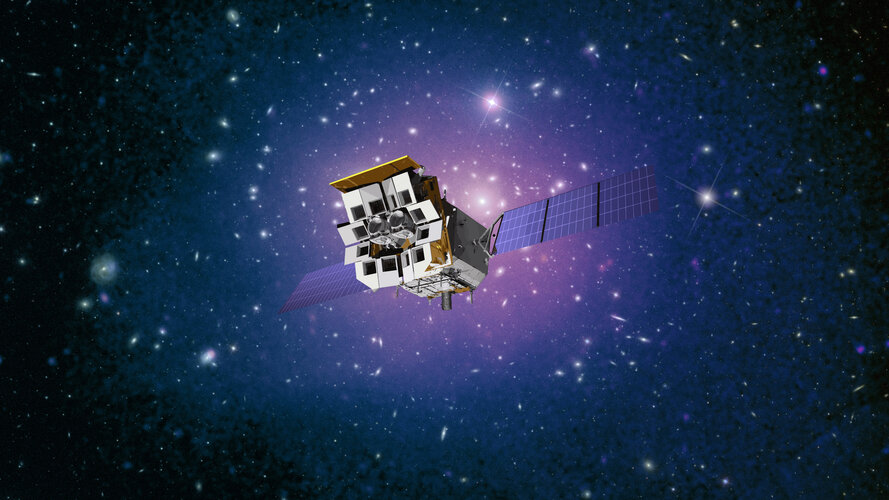A tale of two stars

Scientists think that the couple started off together, as a better-matched binary pair consisting of two rather big stars, six and eight times more massive than our Sun.
The bigger star exhausted its nuclear fuel earlier and started to expand, shedding matter to its companion. First, gas in its puffed-up outer layers got pulled in by the companion; then its remaining outer shells got ejected, forming an envelop around the two stars, which later became a disc, and finally dissolved.
By the end of this drama, the companion star had grown to be 12 times the mass of the Sun, while the outstripped core of the other had collapsed to become a white dwarf of just over one solar mass. Now, it is the turn of the white dwarf to steal and gobble up material from the outer layers of the Be star.
“This study gives us new insights into a rarely observed phase of stellar evolution, which is the result of a complex exchange of material that must have happened among the two stars,” remarks Ashley Chrimes, research fellow and X-ray astronomer at ESA. “It’s fascinating to see how an interacting pair of massive stars can produce such an intriguing outcome.”
ESA’s XMM-Newton mission’s follow-up observation in the direction of EP J0052, 18 days after Einstein Probe’s first look, did not see the signal anymore. This sets a limit on the duration of the flare, showing it to be relatively brief.
The duration of the short burst, and the presence of neon and oxygen, hint at a rather heavy type of white dwarf, likely 20% more massive than the Sun. Its mass is close to the level, called Chandrasekhar limit, above which the star would continue to implode, and become an even denser neutron star, or explode as a supernova.



